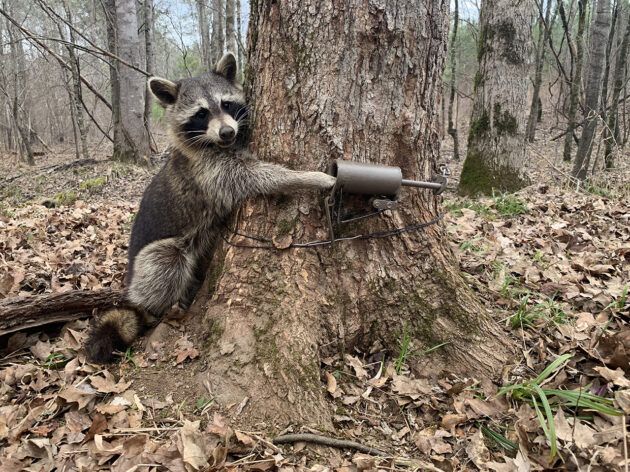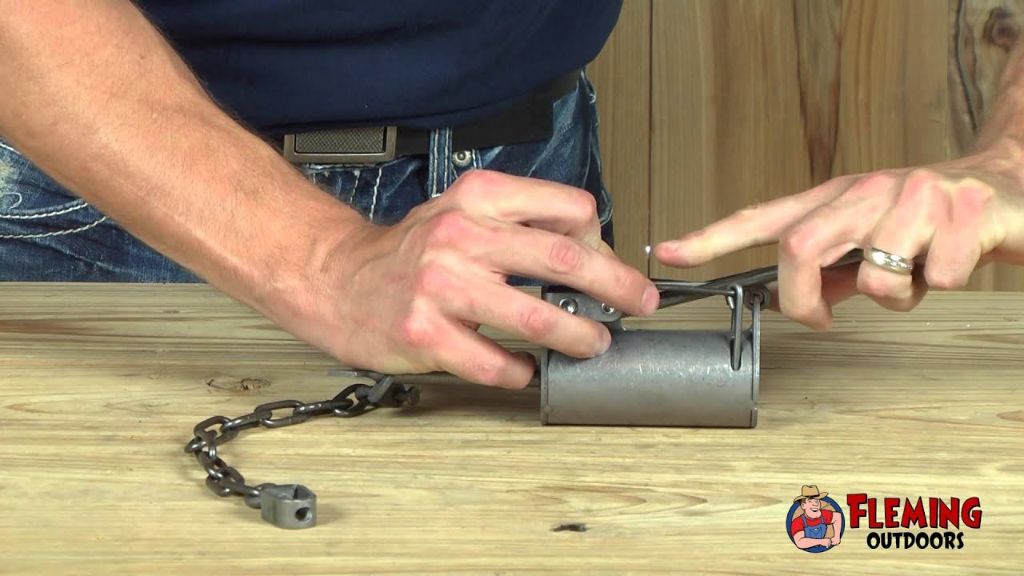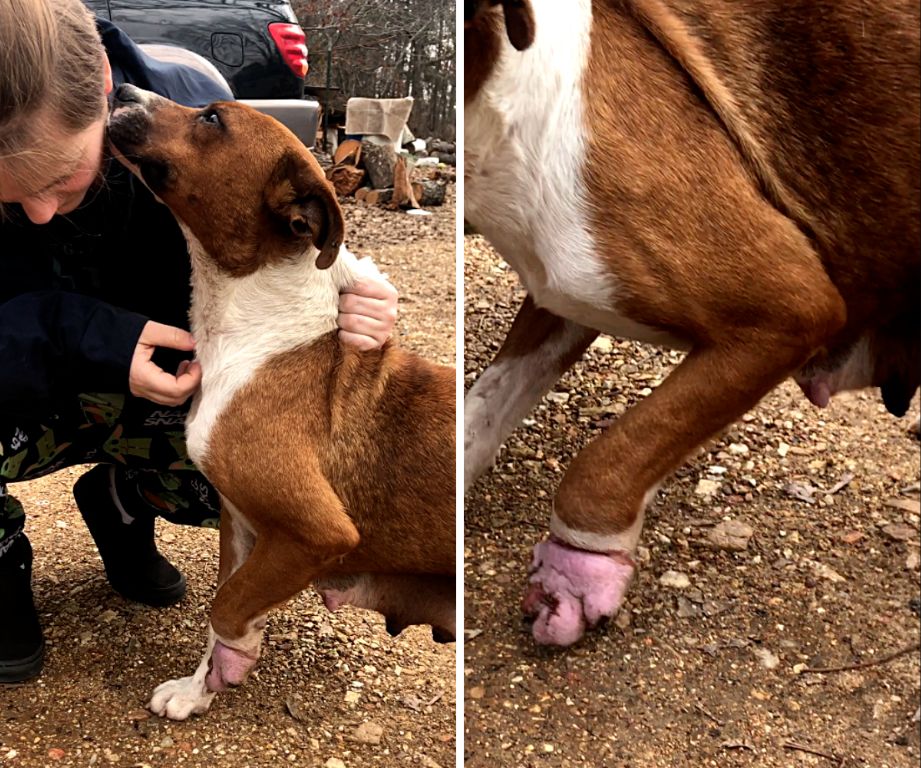Introduction
Dog proof traps are specially designed foothold traps that are used to trap medium-sized animals like raccoons, opossums, and skunks, while avoiding catching unintended animals like dogs and cats. They are called “dog proof” because the trap is designed so that a dog cannot trigger it. Dog proof traps have a round or square hole that the target animal must reach into with their paw or hand to trigger the trap inside the hole. These traps are popular among trappers because they allow trappers to avoid non-target catches of pets.
The traps work by baiting the inside of the hole with food to attract target animals like raccoons. When the animal reaches inside the hole, they will step on a trigger plate that causes the jaws of the trap to quickly close around their paw or hand. The traps do not injure the animal when closed, only restraining them until the trapper arrives to dispatch or release the animal. Dog proof traps allow trappers to selectively trap nuisance wildlife in areas where there may be concern about catching unintended animals like neighborhood dogs and cats.
According to TrappingToday, popular brands of dog proof traps include the “Lil’ Gripperâ€, “EGGâ€, and “DTC†traps.
Recommended Usage
Wildlife agencies provide guidelines on the proper usage of dog proof traps for trapping raccoons, opossums, skunks and other medium-sized animals. According to the Dog Proof Traps article, these specialty traps should only be used to target the intended species in order to avoid catching non-target animals. Proper usage also involves following regulations on trapping seasons, licensing, and humane treatment of animals.
The How to Use DOG PROOF Traps video recommends using dog proof traps to trap raccoons coming to areas around homes, farms, or other sites where they may be problematic. However, trappers should take care to avoid catching pets or other domestic animals. Overall, wildlife agencies emphasize selective and responsible trapping practices.
Trap Spacing
Proper trap spacing is important to maximize your trapping success when using dog proof traps. Some factors to consider when determining trap spacing per acre include:
Terrain – More rugged terrain with a lot of hills and valleys will require closer trap spacing than flat open areas. Traps should be placed to intercept target animal travelways. In rough terrain, travelways are more compressed. A good starting point is 10-20 yards between traps in rugged areas.

Vegetation Density – Thick vegetation limits visibility and travel, requiring tighter trap spacing. In areas with thick brush or grass, space traps about 10-15 yards apart. In open areas with good visibility, traps can be spaced 20-30 yards apart.
Animal Population – Higher animal populations require more traps and closer spacing. For high raccoon populations, trap spacing of 10-15 yards is recommended. For lower populations, 20-30 yard spacing may be sufficient.
Lure/Bait Used – Strong lures and baits that work well for the target species will draw animals in from longer distances, allowing greater spacing between traps. Spacing traps 10-15 yards apart is a good starting point when using strong bait.
Weather Conditions – Colder weather makes animals less mobile, requiring tighter trap spacing. During cold snaps, increase density to 10-15 yard spacing.
According to this video, a general rule of thumb is to space dog proof traps 10-20 feet apart when trapping raccoons in most terrain and conditions. Closer spacing may be needed in certain situations as covered above.
Trap Density
The recommended trap density when using dog proof traps for predator control is typically 4-8 traps per acre. According to a Montana State University Extension guide, densities of six to eight traps per acre are considered high density for effective predator control.
For example, a 40 acre property would need 160-320 dog proof traps deployed to achieve ideal trap densities. That equates to 4-8 traps placed in each acre segment across the property. Some trappers recommend starting with 6 traps per acre as a baseline density.
Higher trap densities in the 6-8 traps per acre range tend to be more successful for catching coyotes, foxes, and other predators. However, the required number of traps may be impractical for larger properties. In that case, focus trapping efforts on areas with the most predator activity or vulnerability.
Cited from: Wildlife Damage Control for Organic Farmers
Setting Traps
When setting dog proof traps, it’s important to place them strategically and securely to maximize your trapping success. According to expert trappers on Trapperman Forums, the best practices are:

Dig a hole wide enough so the spring won’t bind when it goes off. Put the DP on an angle deep enough so the entire trap is in the hole. Use a trap setting tool or stick to depress the pan safely while you position the trap. Make sure the pan is level once set. Cover loosely with leaves, dirt or mulch so light still gets in. You want about 1-2 inches of cover.
Set traps on animal trails, in culverts or in areas with obvious raccoon activity like around trees. Focus on small paths versus main trails. Near structures like sheds, woodpiles or decks can also be productive sets. Stay off human walking paths or mowed areas.
Space traps every 50-100 feet in areas with heavy animal traffic. For lighter sign, 200 feet may be sufficient. In general, the more coon activity, the more traps you can add.
Check local regulations on number of traps allowed per acre. On private land, 5-10 traps per acre is common. You may need a permit for public land and limits are often lower.
Make sure traps are sturdy and stable when set. Raccoon are strong animals. Position traps so vegetation, roots or rocks help hold them in place.
Consider staking down traps using wire, chains or trap stakes if raccoons keep pulling them out of place. Stakes work best in softer ground.
Use gloves when handling and setting traps. The powerful springs can cause injury if triggers snap while your hand is inside the trap.
Baiting Traps
Using the right bait is crucial for attracting raccoons and ensuring the trap is sprung. Popular baits for dog proof traps include fish, meat, sweets, nuts, and fruits. According to Trapperman Forums, an effective homemade bait combines dry dog food, artificial vanilla extract, and a few drops of raccoon lure like Green Death. The vanilla extract helps mask human scent, while the dog food provides a familiar food source. For a premade bait, Raccoon Control recommends Duke’s Dog Proof Bait, which contains fish, corn, and other raccoon favorites.

When baiting, place a teaspoon or so of bait on the trigger or inside the trap. You can also smear bait around the trap entrance or hang bait above the trap using wire to entice raccoons to investigate further. Refresh bait as needed to keep it attractive. Avoid touching baits with bare hands, since scent can deter raccoons. Place traps near raccoon trails, dens, feeding areas and other high traffic spots to increase odds of a catch.
Trap Checking
It is important to check traps frequently to avoid prolonged suffering or injury to any trapped animals. Legally, traps must be checked at least once every 24 hours in most states, though some require more frequent checking such as every 12 hours.
According to the New Jersey Department of Environmental Protection, traps should be checked daily, preferably in the morning (NJDEP, 2022). Check traps as early in the day as possible to prevent stress to any animals caught overnight. Approach carefully and quietly to avoid spooking trapped animals.
When checking traps, release any non-target animals immediately and humanely. Be prepared with equipment to free trapped animals. Carry a catchpole, thick gloves, and bolt cutters. For injured animals, safely end suffering as quickly as possible.
Maintaining a consistent trap checking routine reduces trap time for animals, allowing for their quick release. Keep detailed records to identify areas where non-targets are frequently caught so trap placement can be adjusted.
Following trap check laws and best practices prevents unnecessary suffering while maintaining effective trapping. Frequent checking is essential for an ethical trapping operation.
Selective Trapping
Trappers have an ethical responsibility to avoid capturing non-target animals as much as possible. Here are some tips for trapping coyotes selectively:
– Use a pan-tension or offset jaw trap specifically designed for coyotes. These have a large jaw spread and offset jaws to allow small non-target animals to escape.
– Adjust pan-tension devices to avoid triggering the trap with less than 15 pounds of pressure. This will prevent smaller animals from being caught while still trapping coyotes effectively.
– Use bait and/or lure that is selectively attractive to coyotes such as meat scraps, pet food, or coyote urine/gland lures. Avoid baits that will attract dogs or cats.
– Set traps away from areas frequented by pets and other non-target animals. Focus trapping in more remote locations.
– Use a trap stabilizer or drags to prevent an accidentally trapped dog or cat from escaping with the trap attached. This allows you to release the animal unharmed.
– Check traps daily and release any accidentally trapped non-target animals immediately. Having the proper release tools on hand is critical.
– Consider using exclusion fencing or cages to create a barrier around the trap preventing access by dogs or cats while still allowing coyote access.
Following selective trapping best practices allows trappers to effectively target coyotes while minimizing risks to pets and other wildlife.
Safety Considerations
While dog proof traps can be effective for trapping certain animals, they also pose risks that need to be properly mitigated. According to this source, these traps can cause injuries to non-target animals who accidentally trigger them while investigating the bait. Fractures, lacerations, joint luxations, and tooth damage have been reported.

To reduce risks, traps should be placed away from areas frequented by pets or endangered species. Traps should also be checked at least once daily to release non-target animals as soon as possible. Carefully follow all usage and safety instructions provided by the trap manufacturer.
When setting or checking traps, wear thick gloves to avoid potential bites or scratches from captured animals. Carry a catchpole to safely restrain animals during trap checks. Release all non-target animals immediately at the capture site. Seek medical attention if bitten or scratched.
By using proper precautions, the risks of injury from dog proof traps can be minimized. However, many animal welfare organizations advocate for only using non-lethal exclusion or deterrent methods rather than body gripping traps which can cause severe harm even when used properly.
Conclusion
In summary, when trapping to control nuisance wildlife like raccoons on your property, it is recommended to use a density of 8-12 traps per acre. Traps should be spaced 30-50 feet apart in grid patterns along natural corridors and bait and trap locations where target species are active. Ensure traps are securely staked and checked daily. Use caution when setting traps and implement selective trapping methods to avoid non-target animals. Adhere to all regulations and best practices for humane trapping. Proper trap usage, density, placement and baiting will lead to effective control while minimizing risks.